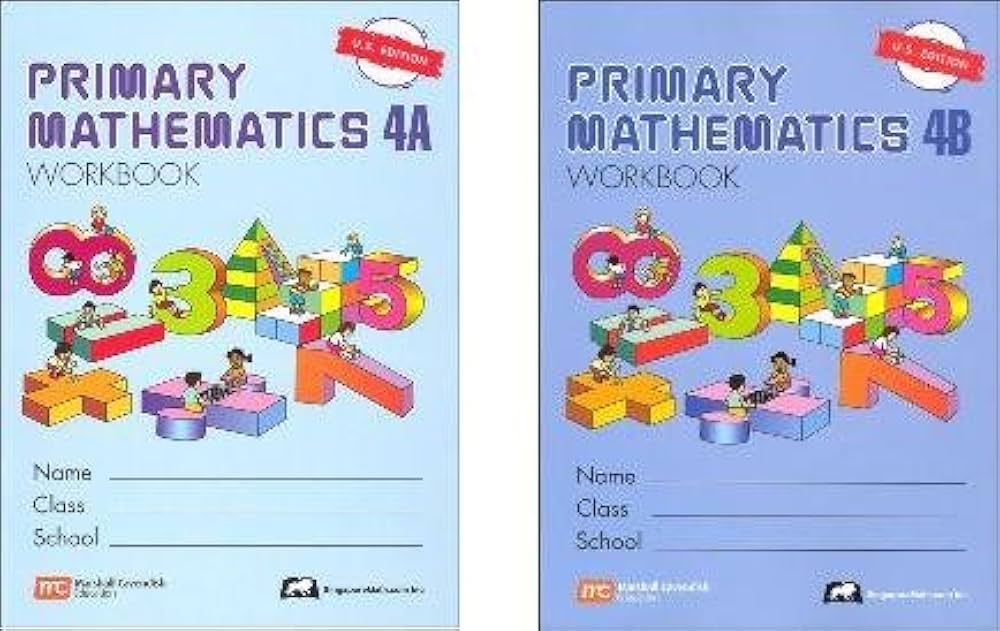How technology is transforming the way we approach struggles in primary math
Unveiling the most effective Faster Ways for Fixing Math Problems Promptly
In the domain name of mathematics, efficiency is crucial. Grasping shortcuts can transform the way people approach troubles. From leveraging the distributive residential property to employing quick reproduction methods, these techniques boost both rate and accuracy. In addition, acknowledging patterns simplifies intricate computations. As one explores these techniques, they may reveal unexpected understandings that can alter their mathematical experience. What are the most efficient techniques that can be conveniently integrated into daily method?
Mastering Psychological Math Techniques
Exactly how can one enhance their estimation speed without counting on calculators? Mastering psychological math methods supplies a functional solution. By utilizing approaches such as breaking numbers right into smaller, workable components, individuals can simplify intricate calculations. For circumstances, when including two-digit numbers, rounding each number to the nearby 10 can make psychological enhancement easier before readjusting back to the initial worths.
Another reliable strategy is to practice multiplication tables completely, enabling fast recall of products (struggles in primary math). Furthermore, acknowledging patterns in numbers can facilitate much faster calculations, such as utilizing the properties of even and odd numbers. Regular technique with challenges and games can additionally improve these skills, making mental math extra instinctive
Eventually, cultivating self-confidence in one's math capabilities permits quicker decision-making and enhances general mathematical proficiency. By incorporating these techniques, anyone can greatly boost their calculation rate.
Using the Distributive Property
The Distributive Home is a fundamental principle in maths that streamlines estimations by allowing reproduction across enhancement or reduction. It is essential for pupils to comprehend its application through practical examples, which can improve their analytical skills. In addition, acknowledging common errors can further strengthen their understanding and protect against errors in future computations.
Recognizing the Distributive Home
Understanding the distributive home can substantially simplify mathematical estimations. This basic home states that when increasing a single term by a sum or distinction, one can distribute the reproduction throughout each term within the parentheses. For instance, in the expression a(b + c), one can revise it as abdominal + ac. This method not just simplifies estimations however additionally boosts understanding of exactly how numbers connect (struggles in primary math). The distributive residential or commercial property is specifically valuable in algebra, where it assists in streamlining expressions and addressing equations. In addition, it prepares for a lot more complicated principles, such as factoring and polynomial procedures. By realizing the distributive building, students can develop a solid structure for tackling a variety of mathematical difficulties effectively
Practical Instances Illustrated
Why is it vital to apply the distributive residential property in useful scenarios? The distributive home enables individuals to simplify complex computations, making analytical more reliable. When computing the overall expense of multiple things, one can use the expression 5(2 + 3) to discover the total cost of five items valued at $2 and $3. By distributing, the estimation becomes 5 × 2 + 5 × 3, generating a quicker result of $25. One more example is in algebra, where simplifying expressions like 3(x + 4) can be achieved through distribution, resulting in 3x + 12. Such applications highlight the effectiveness of this residential property in different real-world situations, improving both speed and precision in mathematical problem-solving.
Common Mistakes to Stay Clear Of
The distributive property is an effective tool in maths, common mistakes can lead to incorrect outcomes. One constant error happens when trainees forget to distribute the coefficient to every term within parentheses. In the expression 3(x + 4), falling short to apply the building appropriately can lead to leaving out the reproduction, generating an inaccurate response. One more error includes misapplying the property by including rather than multiplying, especially when negative indicators are entailed. In addition, pupils might neglect to simplify the result, which can obscure mistakes made throughout distribution. Identifying and staying clear of these mistakes can boost problem-solving effectiveness and accuracy when making use of the distributive property in various mathematical contexts.
Quick Reproduction Shortcuts
In the domain name of fast reproduction faster ways, techniques like increasing by powers of 10 and the doubling and halving method stand apart. These techniques can significantly simplify computations, making them a lot more obtainable. Comprehending these shortcuts can enhance efficiency in mathematical problem-solving.
Increasing by Powers of 10
When increasing by powers of 10, the process comes to be remarkably simple, as the operation largely involves shifting the decimal factor. Increasing a number by 10 requires relocating the decimal one place to the right, while increasing by 100 requires a shift of 2 areas. This simplicity reaches larger powers, where each additional absolutely no indicates an additional decimal change. For instance, increasing 5.6 by 1,000 cause 5,600. This approach greatly boosts speed and accuracy, as individuals can swiftly imagine the result without complicated calculations. Such efficiency is specifically valuable in mental mathematics or when time is limited, enabling fast analytic in numerous mathematical contexts. Mastering this strategy is necessary for anybody intending to improve their math abilities.
Increasing and Cutting In Half Approach
The Increasing and Cutting in half Technique supplies an efficient technique for fast reproduction, specifically when dealing with also numbers. This strategy includes transforming a multiplication issue right into a less complex form by either increasing one of the numbers and halving the various other. For example, to compute 16 × 25, one can halve 16 to get 8 and double 25 to obtain 50, resulting in 8 × 50, which equals 400. This method simplifies estimations, making them more manageable. It is especially helpful in psychological mathematics, allowing individuals to resolve troubles swiftly and accurately. By leveraging this approach, students and specialists can enhance their mathematical dexterity, thereby boosting total performance in mathematical jobs

Efficient Division Approaches
Although division usually presents challenges for numerous learners, employing effective strategies can greatly simplify the procedure. One effective technique is using suitable numbers, which involves rounding the divisor and dividend to less complicated values that are close to the initial numbers. This strategy makes mental estimations much more workable. Another method is the estimation method, where students can find a rough answer before implementing the precise department, supplying a useful benchmark for accuracy.
Moreover, the lengthy department method stays a staple for splitting larger numbers. By breaking the process into smaller sized, more digestible actions, students visit the website can maintain clarity. The duplicated subtraction method can additionally be helpful, specifically for those that have problem with more abstract ideas. By methodically subtracting the divisor from the returns, people can picture the process. In general, these approaches can improve division abilities, bring about quicker and more accurate problem-solving abilities.
Quick Addition and Subtraction Methods
Exactly how can learners boost their speed and precision on top of that and reduction? One reliable technique is to make use of mental mathematics approaches, such as damaging numbers into smaller, more manageable components. For example, when adding 47 and 36, one can initially add 40 and 30 to obtain 70, after that add the continuing to be 7 and 6 to reach 83. This approach simplifies calculations and lowers errors.
Another technique includes using the number line for aesthetic learners, assisting them to see the partnerships in between numbers and boost their understanding. In addition, exercising with devices like flashcards can enhance fast recall of fundamental amounts and distinctions.
Learners can benefit from familiarizing themselves with benchmark numbers, such as rounding to the local 10, which enables for quicker estimates. By including these methods into their method, learners can substantially boost their speed and accuracy in basic arithmetic procedures.
Leveraging Estimation for Quick Calculations
Evaluation works as a powerful tool for enhancing estimation speed, enhancing mental math techniques effectively. By rounding numbers to their nearest whole worths, people can simplify complex calculations, making it much easier to reach an approximate result rapidly. For circumstances, when faced with an issue like 198 + 267, rounding to 200 + 270 returns a quick price quote of 470, permitting the solver to evaluate the precision of the last answer.
Moreover, estimate is particularly beneficial in scenarios involving reproduction and department. By rounding factors to simpler numbers, one can promptly determine approximate products or quotients. This strategy not just conserves time however likewise assists in determining potential errors in calculations.
Identifying Patterns and Formulas
Patterns and formulas are essential devices in mathematics that allow individuals to solve problems a lot more successfully. Recognizing these patterns allows students to identify relationships between ideas and numbers, which can streamline complex computations. As an example, acknowledging the quadratic formula (ax ^ 2 + bx + c = 0) assists in fast services to various equations.
Patterns in sequences, such as math or geometric developments, aid people anticipate future terms without extensive estimations. Solutions, on the various other hand, act as faster ways, permitting faster problem-solving by enveloping complex connections into workable expressions.
Regularly Asked Questions
Just How Can I Boost My Emphasis While Solving Math Troubles Swiftly?
To improve focus while fixing math issues quickly, one can remove diversions, set details goals, method mindfulness strategies, take normal breaks, and preserve a constant research regimen to boost focus and psychological clearness.
What Applications or tools Assist with Quick Math Problem-Solving?
Various devices and apps, such as Photomath, Microsoft Math Solver, and Desmos, enhance fast mathematics analytical. These sources supply step-by-step remedies, graphing capacities, and instantaneous feedback, making read this article them important for specialists link and trainees alike.
Exist Details Mathematics Shortcuts for Standardized Examinations?
Yes, details math faster ways for standard tests consist of techniques like estimate, recognizing number residential properties, using the process of elimination, and understanding typical formulas. These methods boost rate and precision, boosting overall examination performance.

How Do I Practice Mathematics Shortcuts Successfully?
To exercise mathematics faster ways successfully, individuals should consistently fix varied issues, make use of online resources, and involve in timed drills. Uniformity and representation on errors boost understanding, eventually bring about boosted speed and accuracy in computations.
Can Shortcuts Be Applied to Intricate Math Problems?
Faster ways can without a doubt be put on intricate math problems, although their effectiveness varies. Mastery of foundational concepts and strategic thinking makes it possible for individuals to simplify procedures, making it simpler to take on complex calculations effectively.
By utilizing strategies such as breaking numbers right into smaller, manageable components, people can simplify intricate calculations. Furthermore, acknowledging patterns in numbers can facilitate faster computations, such as utilizing the homes of even and odd numbers. Evaluation offers as an effective device for enhancing estimation speed, matching mental mathematics methods successfully. By rounding numbers to their closest whole worths, people can simplify complicated estimations, making it easier to show up at an approximate outcome quickly. Recognizing these patterns enables learners to identify relationships in between numbers and concepts, which can simplify intricate computations.